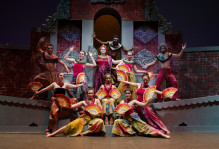1,000 Giddy Arcana: black and turkey
One of life’s most rewarding and innocent pleasures is to look up at that hawk someone has spotted…and tell them that their “hawk” is actually a vulture. Around Williamsburg, vultures are the most common large birds you’ll see in the open air.
True, there are several hawk species you can see, but if the bird is soaring (not gliding), you’re probably looking at a vulture. Adam Duerr, a research biologist at William & Mary’s Center for Conservation Biology, studies vultures. One day last semester, Adam and I had a fine impromptu discussion in a Millington Hall corridor and the virtues of vultures, which are interesting birds.
We have two species around here, the turkey vulture and the black vulture. In flight you can tell them by the markings on their wings. Black vultures have solid black underwings, except for white at the tips. Turkey vultures wings are half dark, have light, with the darker part in front. Adult turkey vultures are the ones with the reddish heads; black vultures have a gray-black head.
Adam tells me that black vultures are the more aggressive species and don’t always wait for something to die before ringing the vulturine dinner bell. They have been known, he says, to eat baby pigs.
Turkey vultures are master soarers. They cruise the thermals with their wings set in a pronounced dihedral, making more of a “V” shape in the air than a black vulture—or a hawk or eagle. It’s not always vultures you see either, either. Many times, I’ve seen bald eagles flying over the Historic District…and nobody seems to notice.




No comments.
Comments are currently closed. Comments are closed on all posts older than one year, and for those in our archive.